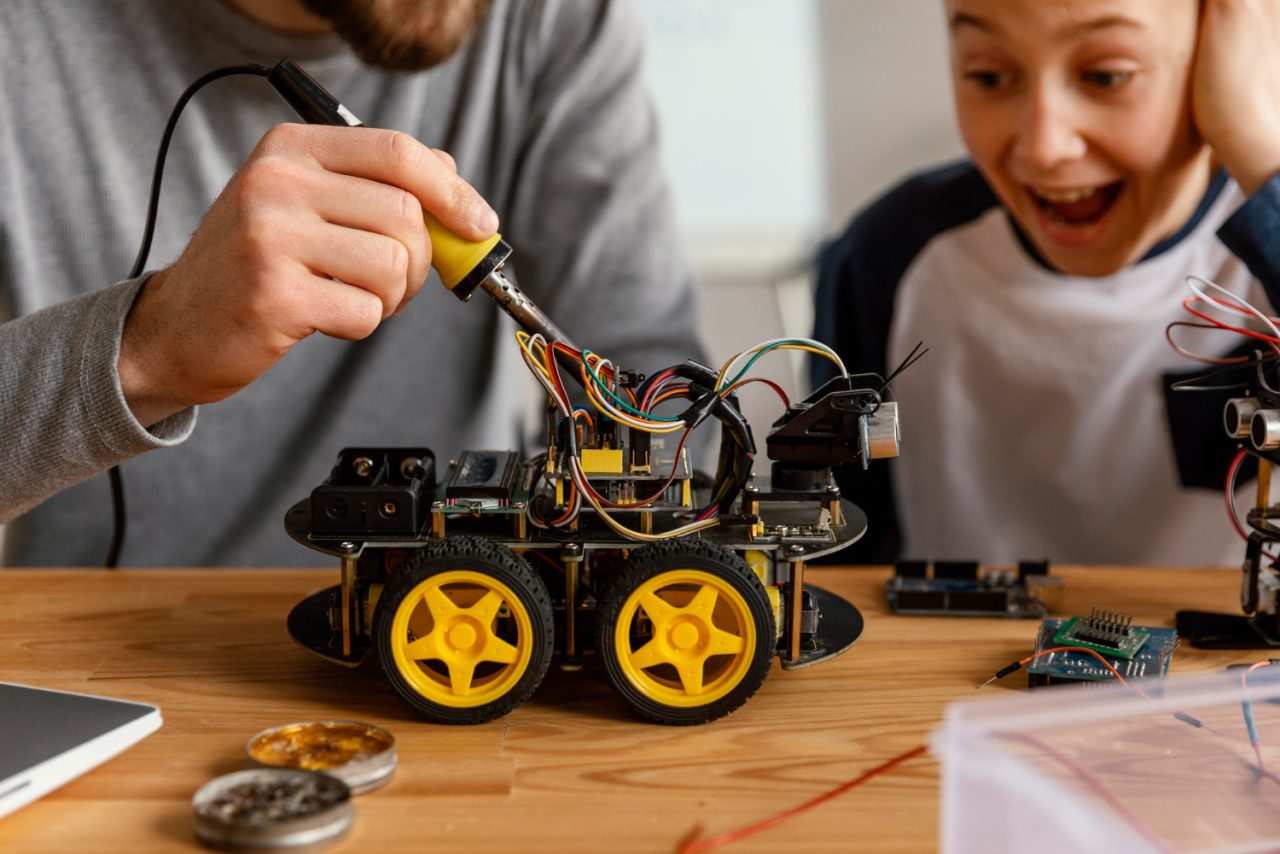What is a Makerspace? What is the Importance of Makerspace?

Traditional classroom settings are making room for innovative approaches to learning. Makerspaces have emerged as dynamic environments where students can explore, create, and collaborate on projects that inspire curiosity and foster critical thinking. In this blog, we delve into the world of makerspaces and uncover their importance in shaping the future of education.
What is a Makerspace?
Makerspaces are creative hubs where individuals with shared interests can gather to explore, experiment, and collaborate on projects. Rooted in hands-on learning, makerspaces offer students the opportunity to engage in activities ranging from electronics and robotics to arts and crafts. These dynamic environments encourage exploration, innovation, and problem-solving, providing a platform for students to unleash their creativity.
Importance of Makerspaces
1. Makerspaces Promote Lifelong Learning
Makerspaces instill a love for learning beyond the confines of traditional education. By encouraging experimentation, exploration, and hands-on problem-solving, makerspaces nurture a mindset of continuous learning and growth. Students develop a curiosity-driven approach to acquiring knowledge and skills, fostering a lifelong passion for innovation and discovery. This emphasis on lifelong learning equips students with the adaptability and resilience needed to navigate an ever-evolving landscape of technology and industry.
2. Makerspace Provides Hands-on Learning Experience
Unlike traditional education models that rely heavily on theoretical knowledge, makerspaces offer a hands-on learning experience that bridges the gap between theory and practice. By working on projects that are relevant and engaging, students gain a deeper understanding of concepts and develop practical skills that are applicable in real-world scenarios. This experiential approach to learning fosters curiosity, engagement, and a lifelong love for learning.
3. Makerspace Changes Behavior
Makerspaces cultivate a culture of experimentation and risk-taking, challenging students to think innovatively and outside the confines of traditional learning. By providing a space for trial and error, makerspaces nurture critical thinking skills, problem-solving abilities, and a growth mindset. This transformative approach to learning prepares students for the complexities of the real world, where creative solutions are paramount.
4. Makerspace Fosters Creativity and Innovation
At the heart of makerspaces lies the opportunity for students to transform their ideas into tangible creations. By engaging in hands-on experimentation and prototyping, students develop essential skills such as critical thinking, creativity, and adaptability. Makerspaces serve as incubators for innovation, empowering students to tackle real-world challenges with ingenuity and resourcefulness.
5. Makerspace Encourages Collaboration and Teamwork
Collaboration is a cornerstone of success in the 21st-century workplace, and makerspaces provide the perfect environment for students to hone their collaborative skills. Through project-based learning and group activities, students learn to share ideas, work cooperatively, and communicate effectively. Makerspaces foster a sense of community where students can learn from one another and leverage each other’s strengths to achieve common goals.
Conclusion
Makerspaces represent more than just physical spaces; they embody a mindset of creativity, collaboration, and innovation that empowers students to shape their own learning experiences. By providing a platform for hands-on exploration and experimentation, makerspaces prepare students for the challenges and opportunities of the future, equipping them with the skills and confidence to thrive in a rapidly evolving world. As we continue to embrace the transformative power of makerspaces in education, we pave the way for a generation of lifelong learners and innovators who are poised to make a meaningful impact on the world.
FAQs
1. What are some typical activities in a makerspace?
In makerspaces, students can engage in a wide range of activities, including electronics, robotics, prototyping, arts and crafts, and computer programming.
2. How do makerspaces promote innovation?
Makerspaces foster an environment of experimentation and exploration, encouraging students to take risks and think creatively to solve problems and develop innovative solutions.
lls from robotics kits, including problem-solving, critical thinking, coding, and engineering principles.
3. What role do makerspaces play in preparing students for the future workforce?
Makerspaces help students develop essential skills such as critical thinking, creativity, collaboration, and adaptability, which are highly valued in the modern workplace.
4. Can students of all ages benefit from makerspaces?
Yes, makerspaces can be adapted to suit students of all ages, from elementary school to higher education, as well as adult learners and community members.
5. What are some examples of successful makerspace projects?
Successful makerspace projects may include building robots, creating wearable technology, designing 3D-printed prototypes, constructing kinetic sculptures, and developing interactive multimedia installations.

